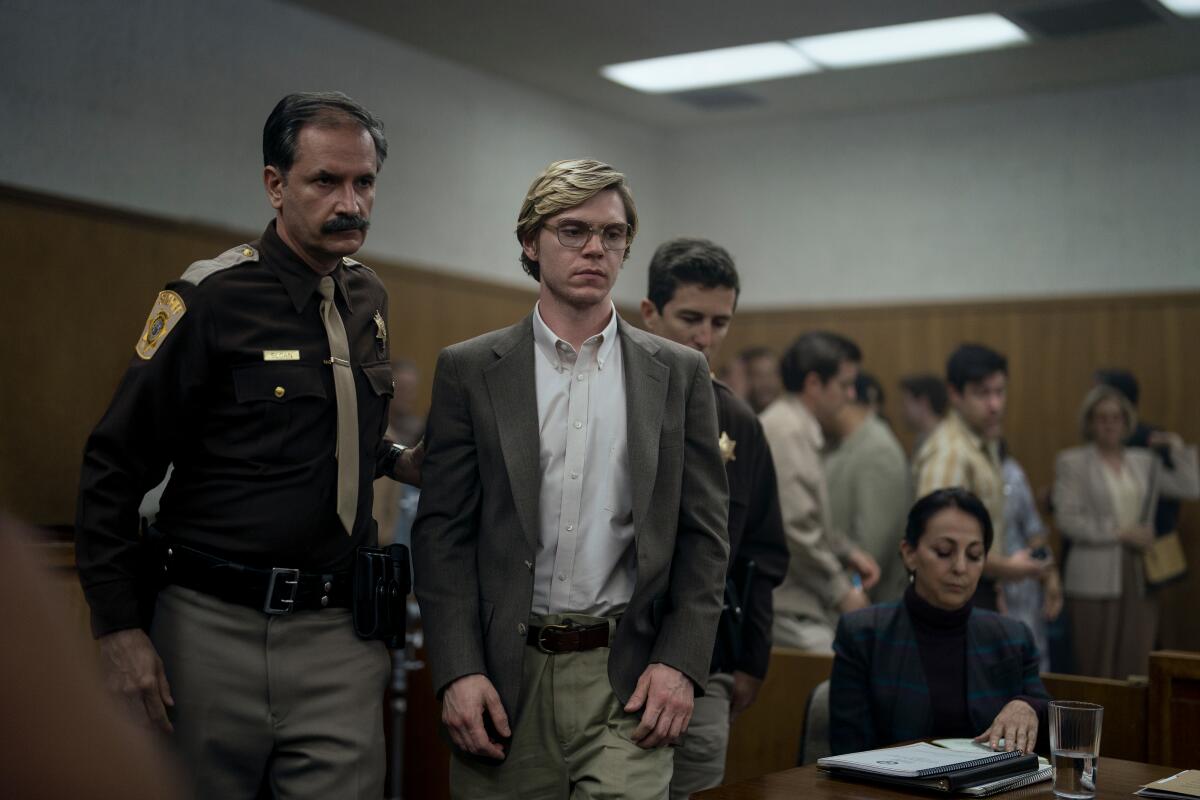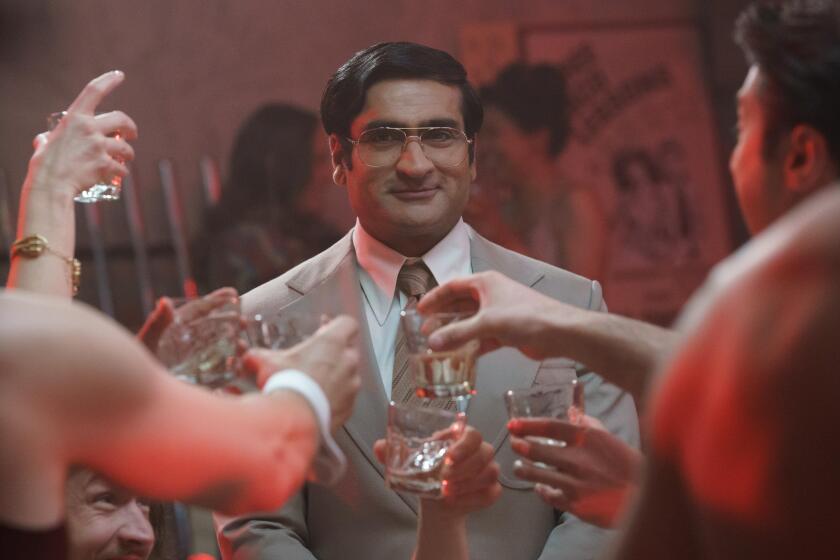Opinion: I wrote a Black true crime book 20 years ago. Why is the genre still so white?

- Share via
Before true crime had its recent resurgence in American popular culture, I began investigating the murder of Lance Herndon, a Black man.
In the spring of 2001, I was working as a magazine writer in New York City when some 900 miles south in Atlanta, an explosive murder trial made headlines. The case was riveting: A high-rolling, 41-year-old tech entrepreneur was found nude and bludgeoned to death in his mansion. The suspects included a slew of spurned mistresses and business rivals.
I caught a flight to Atlanta and began to probe the mysterious death of Herndon, a Gatsby-esque figure in a world of Black nouveau riche strivers. The experience of getting the book to print — and then last September, seeing its onscreen adaptation starring Taye Diggs — showed me what has and hasn’t changed for the genre.
Audiences are spending hours rehashing true-crime stories, drawn to realism and nostalgia associated with ripped-from-the-headlines stories.
Back then, true crime wasn’t the industry juggernaut it is today. The genre boasted its classics, like, say, ”In Cold Blood” or ”Midnight in the Garden of Good and Evil.” But mainstream publishing largely viewed true crime as a niche market.
My book proposal wasn’t an easy sell in this environment. In addition to the genre stigma, it had an all-Black cast: victim, suspects, witnesses and district attorney. One publisher acquired the project only to pull the plug a few months later. With the support of Manhattan literary agency Dystel and Goderich, six years later, “Redbone: Money, Malice, and Murder in Atlanta” was published by Amistad/HarperCollins. I viewed my book as a hopeful sign that true crime would expand, and find broader appeal, by putting people of color at center stage.
My optimism was premature.
The genre has since exploded. As Janet Nguyen wrote for Marketplace in 2022: “True crime now consists of seemingly countless sub-genres, spanning multiple platforms that include network and cable television, streaming services and podcasts.” It also attracts a diverse audience: True crime podcasts, a popular segment, boast Latino and Black listeners as its most loyal, according to a Pew Research Center report published last year.
Yet while true crime has grown, the type of story it favors has not.
Black horror warns us of what humanity is capable of — what racism is capable of inflicting onto Black and brown bodies.
Whether it’s acclaimed podcasts such as Serial and Bone Valley, or hit shows like the Netflix miniseries “Murdaugh Murders: A Southern Scandal,” a true crime buff could binge the genre for days without seeing a Black victim or perpetrator. (These mirror trends in scripted crime TV shows, too: A 2020 analysis found that at least 81% of these series’ writers were white, and among 26 shows studied, 20 had one or zero Black writers.) Media studies explain the dearth of Black central characters in true crime this way: White American audiences don’t identify enough with Black Americans to invest in stories that feature Black people.
Critics of the genre warn that the homogeneity of true crime stories not only reflects racial biases — it exacerbates them, too, negatively influencing policing and public perception of victims. In a blistering 2020 essay for the Appeal called “The Enduring, Pernicious Whiteness of True Crime,” journalist Elon Green puts it this way: “It’s hard to overstate how inaccurate and damaging the results and perceptions created by so much whiteness has been. Generations of readers have been led to believe that murder victims most often are women killed by men and that Black serial murderers are rare. Neither assertion is true.” Green cites FBI statistics showing that most homicide victims are men killed by other men, and that the race of serial killers matches up with the racial makeup of the U.S. as a whole.
It’s no surprise that instead of covering this diverse reality, true crime has gained a reputation for focusing on white women victims. Journalist Gwen Ifill famously coined the phrase “missing white women syndrome” to describe the media obsession with that demographic, contrasted with relative negligence toward missing women of color. The data have borne that out: A 2017 study found that white women accounted for almost half of missing persons news coverage, despite their making up a smaller proportion of total cases, while Black people were “significantly underrepresented” in coverage.
From ‘Unsolved Mysteries’ to ‘I’ll Be Gone in the Dark,’ true crime is ubiquitous on TV. But it may not be as impactful as its cultural footprint suggests.
Incorporating more stories of marginalized people wouldn’t just make the true crime genre more accurate. It could make it more responsible, too. Consider that some of the most important critiques of the Netflix show about serial killer Jeffrey Dahmer, who killed primarily Black LGBTQ men in Milwaukee, came from queer Black people who had lived in that city commenting on how the production retraumatized their communities, failed to consult victims’ families and sensationalized tragic events.
It’s time for true crime to catch up to reality, end its whitewashing and hire more writers, directors and producers of color. They can broaden the industry’s view of American life and its criminal underbelly — and who that underbelly hurts and murders.
I was glad to see Lance Herndon’s case make it to TV last year on BET. But it’s troubling to still wonder whether any network that didn’t have “Black Entertainment” in its name would give the same attention to a Black true crime story.
Ron Stodghill, a professor at the Missouri School of Journalism, is the author of “Where Everybody Looks Like Me: At the Crossroads of America’s Black Colleges and Culture.”
More to Read
A cure for the common opinion
Get thought-provoking perspectives with our weekly newsletter.
You may occasionally receive promotional content from the Los Angeles Times.












